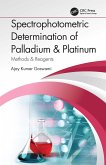A fascinating glimpse into the secret world of water drops and how they manifest on a range of materials from salt to gemstones and tears. Lavishly illustrated, this is a window into a natural world of astounding beauty.
Hinweis: Dieser Artikel kann nur an eine deutsche Lieferadresse ausgeliefert werden.
Hinweis: Dieser Artikel kann nur an eine deutsche Lieferadresse ausgeliefert werden.








